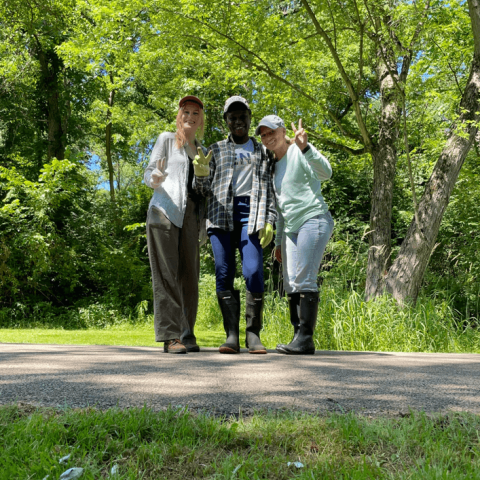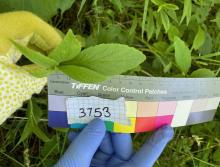
Alicia Costello is making the rounds of Northeast Ohio. As an upperclassman who was born in the Sandy Valley area, she now resides in Canton, and commutes to the ÇŕÄęɬµĽş˝ Salem and Stark campuses regularly to attend class. Last academic year, she also became a fellow within the Environmental Science and Design Research Institute (ESDRI) at ÇŕÄęɬµĽş˝, which means she occasionally comes to the Kent Campus now. Alicia also drives all over the state to see her siblings (including an identical twin sister at Ohio State University), hike, ski, snowboard and spend time with her family.
Because she has always enjoyed nature and being outside, declaring horticulture as a major was an obvious decision. While Alicia also researches with Sarah Eichler, Ph.D., Alicia wanted to gain additional skills. This past summer, she volunteered with Chris Blackwood, Ph.D., and Andrea Case, Ph.D., in their soil ecology lab. So, despite all the miles she was already driving, Alicia devoted two days a week to conducting research gratis in and around Kent, Ohio. She believes the many research skills she is currently gaining at ÇŕÄęɬµĽş˝ will help prepare her for graduate school, where she plans to focus on sustainable agriculture.
Summer Field Research

Over the summer term, Alicia worked alongside an ecology graduate student – Princess Abu – and a few S.U.R.E. (Summer Undergraduate Research Experience) students in Blackwood’s laboratory, located in the Integrated Sciences Building on the Kent Campus. The overarching goal of the research was to investigate ecological, evolutionary and historical mechanisms affecting the past and present co-occurrence of close relatives within the genus Lobelia across spatial scales. She enjoyed her time spent with everyone and the supportive nature of the team. The team offered “lots of help” because often the research Alicia and Abu were conducting was too much for the pair. In fact, Alicia points out that the hardest aspect of research was “we tried to fit in so much each day.”

While she enjoyed the whole experience, another difficult task was enduring the heat and humidity of an Ohio summer. Typically, one of Alicia’s two research days each week was spent conducting fieldwork at a nearby park. Alicia and Abu looked after samples of Lobelia – a genus of flowering plants – and examined the matrix of local vegetation surrounding it, counting native plants in the vicinity. Every week the pair documented Lobelia growth by measuring leaf size, lower corolla lobe dimensions and stigma-nectary distance, as well as rating its observable health, for instance. This required them to don long sleeves, pants and heavy boots in the 90-degree sticky weather to avoid poison ivy, prickly plants and biting insects in the swampy area of the park. Despite the oppressive heat, Alicia was thrilled that Abu taught her how to identify Lobelia and thought “it was a great precursor for the Plant Identification course I will be taking as part of my major.” The data they collected will be used to characterize the abiotic and biotic factors associated with distributions of all 23 Lobelia species, including variation in habitat, plant functional traits and mating traits in overlapping and non-overlapping ranges.
"...mix up field and lab work."
Advice and Benefits

On research days when Alicia was not conducting fieldwork, she was working in Blackwood and Case’s lab, where she prepared over 200 Lobelia samples – collected from many states along the U.S. east coast – for analysis, specifically to examine their reproductive qualities and how those evolved. Some of the tasks Alicia was charged with involved learning about new technology and machinery, such as running a Geno/Grinder machine (used for extraction of nucleic acids, proteins and other plant tissue molecules). She enjoyed that one day per week was devoted to fieldwork, and one day per week was designated exclusively for laboratory work. “Personally, [I am glad I chose] something to mix up field and lab work. Lab work can be repetitive and boring, but fieldwork can be tough too.” Although both types of research on Lobelia will continue after Alicia graduates, she found a nice balance between the two.
Alicia’s thoughtful advice to students is to “Reach out to faculty because there are more options than you think or than are advertised.” This is exactly what Alicia did, and how she became involved with Blackwood and Eichler, though she was excited to have many more faculty respond.
"Reach out to faculty because there are more options..."
If you would like to conduct this type of research or become a fellow with Environmental Science and Design Research Institute, please visit www.kent.edu/esdri/fellows-program. If you are faculty interested in partnering with the institute, please email esdri@kent.edu. Thanks to Chris Blackwood and Andrea Case for collaborating with ESDRI.

